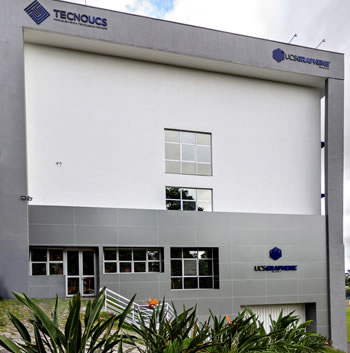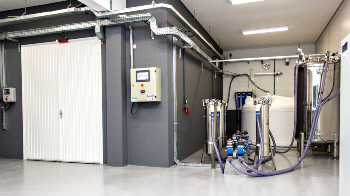Who we are
UCSGRAPHENE has established itself as a center of excellence in the development of technological solutions, focusing on the use of advanced materials to improve industrial products and processes. It not only creates new products, but also transforms industrial processes, using materials such as graphene and other nanomaterials, always with the mission of leading the advancement of nanotechnology and sustainable innovation.
UCSGRAPHENE is the first and biggest large-scale graphene development center, installed by a university in Latin America. In operation since March 2020, it brings together the expertise of the University of Caxias do Sul gained in 20 years of advanced research in nanomaterials, resulting in high quality graphene nanoplatelets for the provision of innovative technological services to strategic sectors and carriers of the future.
The academic origin and its strong insertion in the scientific environment are differentials of UCSGRAPHENE, ensured by the multidisciplinarity of the Science, Technology and Innovation Park - TecnoUCS and also by cooperation agreements with national and international universities to carry out research, projects, technological services and technical-scientific training.

Learn more about graphene
Graphene is one of the allotropic forms of carbon. Like diamond, carbon nanotubes and graphite, from which it is derived, are characterized by the hexagonal organization of atoms. It was isolated for the first time in 2004, in England, by scientists Andre K. Geim and Konstantin S. Novoselov, research that received the Nobel Prize in Physics in 2010.
Graphene stands out for its high transparency, lightness, malleability, impact and bending resistance, as well as being an excellent thermal and electrical conductor. These properties, observed in their purest form and under controlled conditions, make graphene a material of great interest for research and development. However, its practical application involves challenges, such as the way in which it is produced and incorporated into different matrices, which influences its final performance in each specific use.
Graphene has the potential to compete with consolidated technologies and replace traditional materials in several areas. Its applications range from faster and more efficient electronics, ultra-resistant composites, conductive inks and higher-performance batteries. In addition, its lubricating properties allow to reduce friction and wear in mechanical systems. Its antimicrobial action can be exploited in coatings and packaging, and its high corrosion resistance opens up new possibilities for metal surface protection
As a highly engineered material, graphene is one of the main resources now available in nanotechnology, being used in the production of LCD screens and displays, touchscreens, electronic components with very high data storage and processing capacity, instantaneous recharge batteries, and others.phene is the lightest and strongest material in the world (200 times stronger than steel), beating even diamond. A 1 square meter graphene sheet weighs 0.0077 grams and is capable of supporting up to 4 kg.


